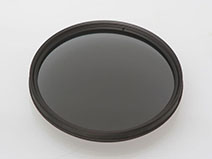
Polarization mirror (also called: polarizing prism), polarization mirror is divided into line polarization mirror (PL mirror) and circular polarization mirror (CPL mirror, ring polarization mirror).
The light transmittance of the line is 41.5%, and the extinction ratio is 99.8%;
The transmittance of circular polarized lens is 30%, and the extinction ratio is 99.9%.
Product features: the polarization mirror can be the incident light, light, or monochromatic light into a linear polarized light, and then through the polarizing plate to completely light extinction.
Product application: polarized lens can be used in the quantitative measurement of polarized light, photographic equipment, polarized light instrument and other fields in an important optical element.
Other Description: (refer to the New York Institute of photography "photographic materials" volume P239~240, excerpt)
Polarization filter is not the same as most other types of filter, it is made of two pieces of glass, and the two pieces of glass are installed in a circular frame, the relative rotation. With the rotation of the polarizing filter will remove more glare and mist. If we have a single lens reflex camera through the viewfinder, we can change this reality to see.
The polarizing filter is help to remove any non metal surface by unwanted glare. Whether it is color photography or black and white photography, polarization filter is indeed able to help us do this.
The reflection produced by glass, water, wood, silk and other smooth surface of the light is polarized, all vibration only in one direction.
Polarized light, "what does it look like?" If we dont know, theres nothing to be ashamed of, because theres nothing different between polarized light and ordinary light. The naked eye cannot distinguish between the polarized light and the ordinary light.
The scientific term "polarization" vividly describes this phenomenon. Polarization can be understood as a vibration in a plane. The polarizing filter function is to prevent the vibration, thus eliminating the polarized light.
Thats why the polarization filter must be rotated. With the rotation of the polarization filter, we can remove the original polarized light.

